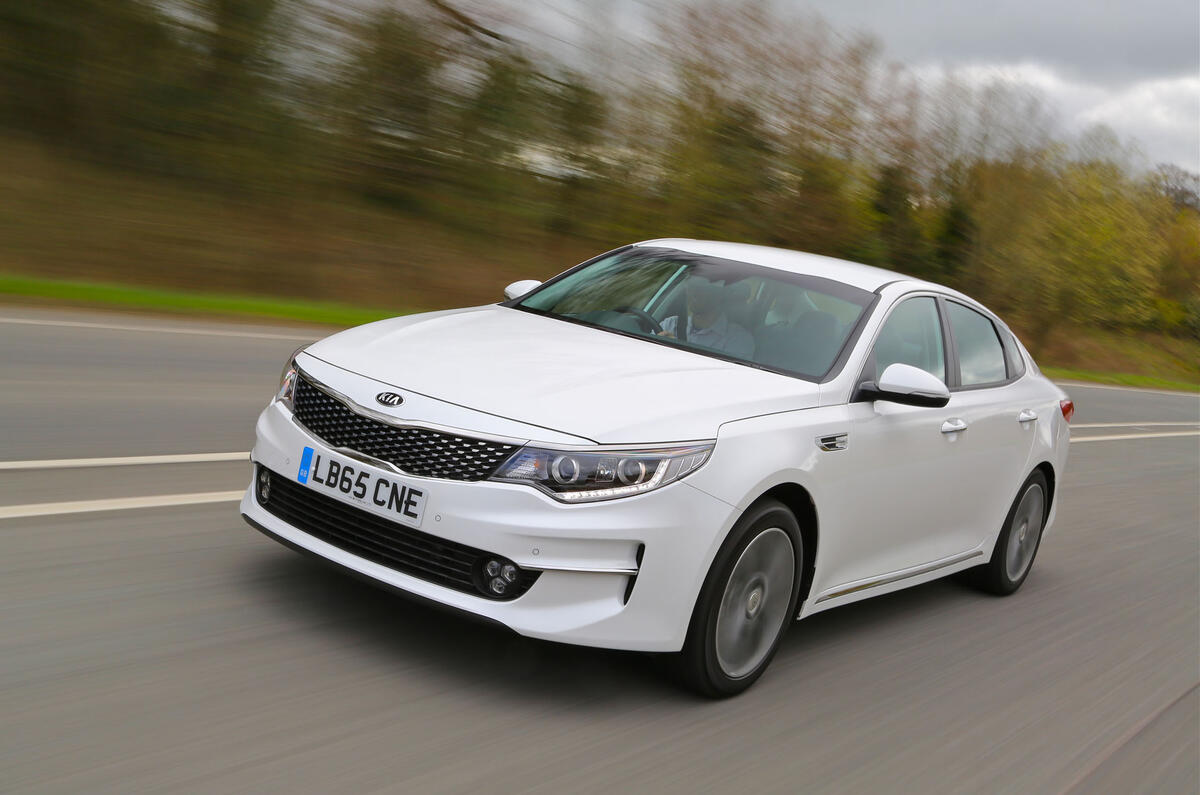This is the newest version of the D-segment Optima. Tasked with competing against the likes of the Ford Mondeo, Vauxhall Insignia and Volkswagen Passat, it must also tempt people away from the ever-popular crossover.
Saying that, Kia reckons plenty of people are still after a big saloon car. Its research suggests that 10 percent of new cars sold will still come from this category even a few years down the line. With that in mind, it’s a market share worth fighting for.
The first generation of Optima was undoubtedly a good-looking machine, thanks to the efforts of Peter Schreyer. It and the Sportage really helped Kia ditch its previously dowdy image.
It would seem that revolution has become evolution for this new model. Up front is the familiar ‘tiger nose’ grille, albeit reshaped and with a little more chrome.
The headlights and bumper gain a bit more definition, while at the back the tail-lights are wider than before and now LED.
Cheap-feeling interior plastics and far too many buttons didn’t do the old car any favours, while on the move refinement and driving dynamics were below par.
With this in mind, Kia has increased the wheelbase by 10mm, the width by 25mm and the height by 10mm. The bodyshell is made with 50 percent more high-strength steel than before, while the use of structural adhesive is up by a whopping 450 percent.






















